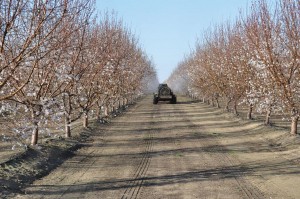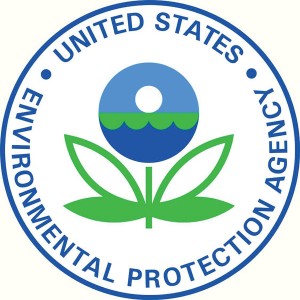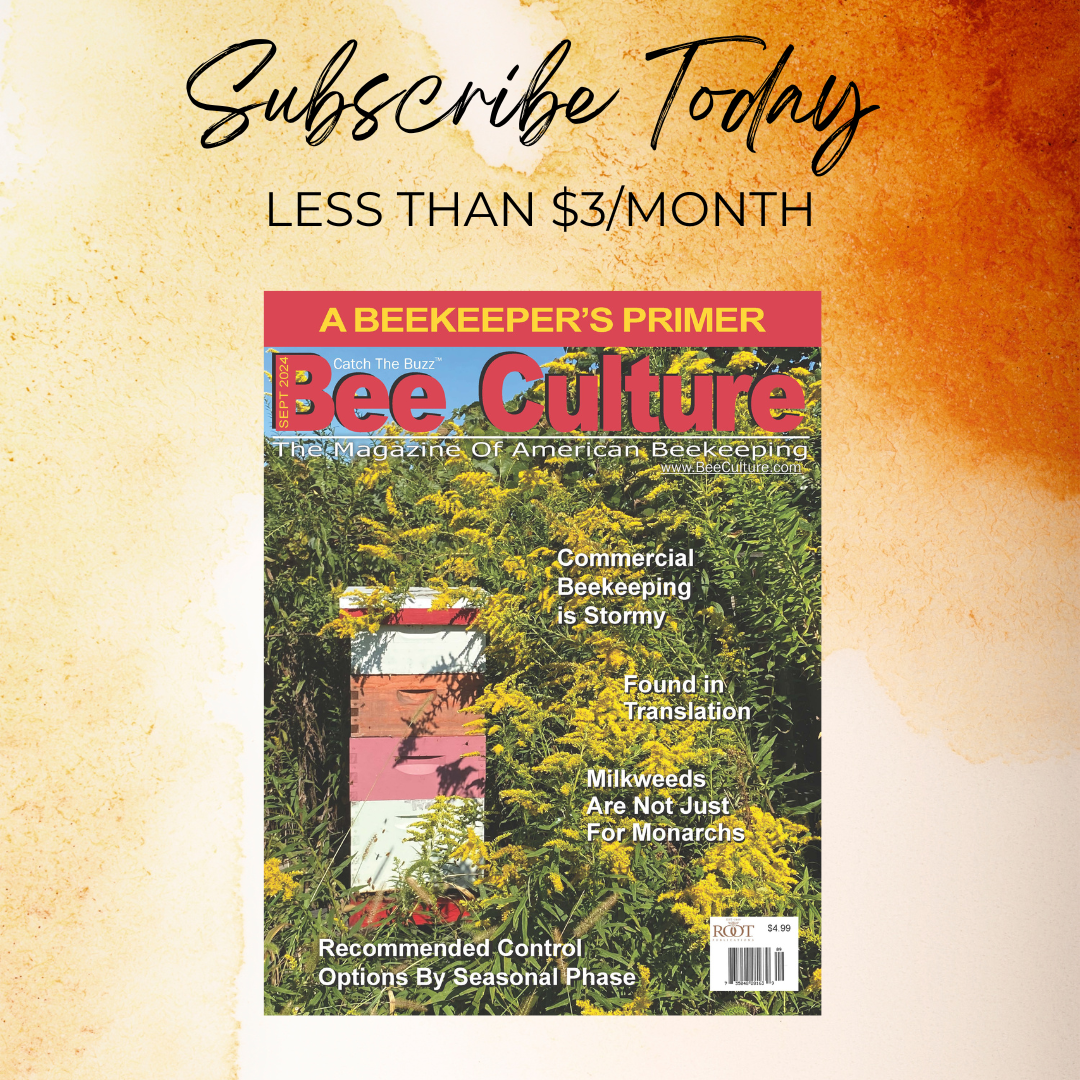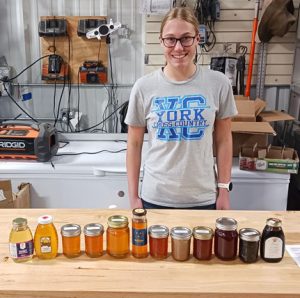State Pollinator Protector Plans
Protecting Pollinators Takes Funding
by Michele Colopy
States are being encouraged to develop Pollinator Protection Plans. Whether it is state or federal government promoting the development of these plans, little will change without funding. At a minimum, states need funding for apiary inspectors and lab testing of honey bees killed due to the result of alleged pesticide exposure. States, or the federal government need to provide sustainable funding in order to successfully implement these Pollinator Protection Plans.
To support local decision-making relative to pollinator protection, State and Tribal entities need:
•Quality label data and language
•Knowledge of inert/other ingredients within pesticide products
•Knowledge of tank mixes- issues with inadequate label guidelines, synergism of products
•Proper pesticide application timeframe for various crops
To investigate a bee kill due to alleged pesticide exposure, the investigator needs to reference a pesticide label which is supposed to clearly define pollinator protection. Knowledge of inert ingredients is convoluted on pesticide labels, but the information is needed when investigating a bee kill. An active ingredient may not have killed honey bees, when it was actually the “other ingredients” combined in a tank with other pesticides. Tank mixes and their unknown chemical synergisms are of grave concern to beekeepers. The combinations of fungicides, herbicides, insecticides, and more into one pesticide application across a crop is unregulated, lacks label guidelines and precautionary use statements, and puts pollinators at great risk. Finally, labels do not guide the user as to the best time of day to apply a product to combat the pest, and still protect honey bees. Reliance on pesticide labels for “guidance and pollinator protection” will undercut any Pollinator Protection Plan.

The division of beekeeping “services” into two categories: honey bees under contracted pollination service, and those honey bees not under contracted services, continues to create animosity between agricultural stakeholders. It shows EPA still does not understand the benefits pollinators provide to agriculture and the ecosystem, and still does not protect managed and native pollinators from acutely toxic pesticides. EPA states the two scenarios were devised based on “where bees are brought on site under contract vs. when bees may be present but the grower may not derive a benefit from the presence of bees on his or her property.”1 Science shows us whether a crop is 100% reliant upon insect pollination, or 10% reliant upon insect pollination, crop yield increases through pollination.2 Retaining a pesticide label with exceptions to apply acutely toxic pesticides to honey bees not under contract pollination is unacceptable. Clear pesticide label protection guidelines are integral to protecting pollinators.
Definitions of beeyard, apiary registration, and beekeeping licenses can become convoluted, and interpreted to define a beekeeping license/apiary registration as a “contract;” placing any beeyard under the category of contracted pollination services, and therefore protected from acute toxicity pesticide applications. An agreement between a farmer and a beekeeper to place honey bees on land to produce a honey crop, could be interpreted as also falling under the auspices of “contracted pollination,” and protection from acute toxicity pesticide applications. Apiary registrations, sensitive crop registries, and beekeeping licenses are not contracts; they are a form of revenue for the state, and a method to address “nuisances” (zoning laws), control for bee diseases, and to provide an opportunity for communication between agricultural stakeholders concerning agricultural practices. The EPA needs to clarify the definition of “contract” for the State Pollinator Protection Plans (also known as MP3s). Beekeepers should not suffer the loss of their livestock simply because they are not under a crop pollination contract. This would not be tolerated in any other area of agriculture.
Too many states are struggling to maintain apiary inspection programs. Fees for apiary registries have not changed in years, possibly decades. Apiary registration fees may not cover the actual costs of apiary inspection in a state. Prospective bee inspectors refuse to apply, or decline the job due to low pay, no funds for mileage, and no funds for basic tools (hive tool, bee disease testing kits and supplies). One inspector per county might be fine for Kalawao County in Hawaii (13 square miles), but not for San Bernardino County in California (20, 105 square miles). Fully funded state apiary programs are integral to implementing and supporting State Pollinator Protection Plans. Protecting pollinators is the purpose of a State Apiarist. Bee inspectors know how to work a beehive, how to test honey bees, and extract samples of hive products for testing of disease and pesticides. The State Apiarist is part of state agriculture. Working together the state agricultural departments can protect crops and protect pollinators. All are necessary for the agricultural economy of the state. All need funded fully to protect the agricultural economy of the state.
As the Pollinator Protection Plans are considered, planned, and implemented in states, beekeepers are an important stakeholder in the process. These plans are meant to protect the very insects that increase crop yield, that make possible the fruits, nuts, vegetables, and seeds that comprise a nutritious, delicious diet. State apiary programs, bee inspectors, lab testing of honey bees (for pests, pathogens, and pesticides) are key to protecting our managed honey bees. Funding must be provided to ensure healthy honey bees. Funding must be provided to test honey bees for pests, pathogens, and pesticides in alleged pesticide bee kills. Lab testing provides the science-based evidence of the health, or demise of a colony. The financial burden of lab testing should not be borne by the beekeeper alone. Pesticide incidents are the real-world data being collected in real-time, based on the product, the label, the ecosystem, crop, and human interactions in the process. When an acute bee kill occurs it is a direct causation of all of these factors. Bee kills are costly to the beekeeper in loss of livestock, and reduced ability to fulfill future pollination contracts. Bee kills are costly to the farmer with reduced, or non-existent pollination of their crop.
State Pollinator Protection Plans will only be as good as the state agricultural leaders want them to be. Successful plans will be welcoming, inclusive, and supportive of all agricultural stakeholders. Successful State Pollinator Plans will be thoughtful, non-partisan, relevant to each state, and representative of each state. Local State agricultural stakeholders must be the leaders within each planning process. National organizations may advise state stakeholders, but by their participation, national stakeholder organizations should not exclude State stakeholders. Beekeepers, especially state beekeeping association leaders, should not struggle to be a part of the State Pollinator Protection Plans; they should be the first call made by a State Agricultural leader. Beekeepers should not have to enact legislation in order to be included in the State Pollinator Protection Plan committee. State Beekeeping Association leadership is key to successful and accepted State Pollinator Protection Plan. We can gather stakeholders together, hold productive meetings, and even develop a Pollinator Protection Plan. However, if the Plan has no funding to support apiary inspectors, no funding for lab testing of bees and hive products, no funding of enforcement for misuse of pesticides, and/or compensation to the beekeeper for loss of livestock, contamination of equipment, and to the farmer a loss of pollinated crop due to loss of pollination services then neither pollinators, nor crops will be protected.

For more information about State Managed Pollinator Protection Plans (MP3s) visit our website under our Resources and Research page, scroll to State Pollinator Protection Plans and Pollinator Health reports at www.pollinatorstewardship.org.
1AP NewsBreak: Feds tell farmers to buzz off on pesticides when bees are busy on croplands, Seth Borenstein, May 28, 2015, http://www.usnews.com/news/business/articles/2015/05/28/epa-plans-temporary-pesticide-restrictions-while-bees-feed2Contribution of insect pollinators to crop yield and quality varies with agricultural intensification https://peerj.com/preprints/184v1.pdf
Council Welcomes Members
As a nonprofit we have only our “service” to provide: our education programs, advocacy work, and our support of what concerns you. We provide this service to donors, the general public, and now members. August 20th the Board of Directors amended the By Laws to create membership in the Pollinator Stewardship Council. With your support you can help us continue our services to backyard, sideliner, and commercial beekeepers in the U.S. Our service, our mission is to defend managed and native pollinators vital to a sustainable and affordable food supply from the adverse impact of pesticides.
We work with state and local beekeepers and beekeeping groups on your ideas and solutions. We compile information about State Pollinator Plans (MP3s) on our website, so beekeepers can easily access this information as they work on their own MP3s. We have helped state beekeeping groups with legislative actions, sharing the local beekeeper’s voice with their elected representatives. The Pollinator Stewardship Council helped facilitate local projects for local beekeeping groups connecting them with grant funders, or writing the grants for local projects. Working together is how we make change for our honey bees and native pollinators.
• We respond to beekeepers when contacted. We received and assisted in filing bee kill reports (please see our map on our website for details), provided 894 Quick Guides (generously printed and laminated by Bee Culture magazine) to beekeepers, and to beekeeping groups for their honey booths at state and local fairs; gave 28 presentations to local, state, and national beekeeping and agricultural stakeholder groups, and provided research materials, handouts, and similar to local beekeepers for local community meetings.
•We seek the judicious use of pesticides and Integrated Pest Management practices so farmers can protect their crops from pests. And, we believe beekeepers have a right to protect their honey bees from bee toxic pesticides. Our Board members, Science Advisor, and staff are all beekeepers. We know first-hand the real-world experiences of managed honey bees.
We collaborate with others to support honey bee health including the:
• Honey Bee Health Coalition with the Program Director serving on two of the four workgroups;
• Joining other Coalition members in creating and implementing the Bee Understanding Project;
• Working with beekeepers from across the U.S. on the Apimondia USA Bid 2019;
• Working with our Science Advisor researching hives as they pollinate crops across the growing season, collaborating with commercial beekeepers, and Montana State University.
The Pollinator Stewardship Council is now welcoming members. We have always been here to support beekeepers, to protect our managed and native pollinators. Working together we can increase our impact, we can increase our ability to improve the health of our honey bees. Join us! Become a member today! (http://pollinatorstewardship.org/?page_id=3603)






